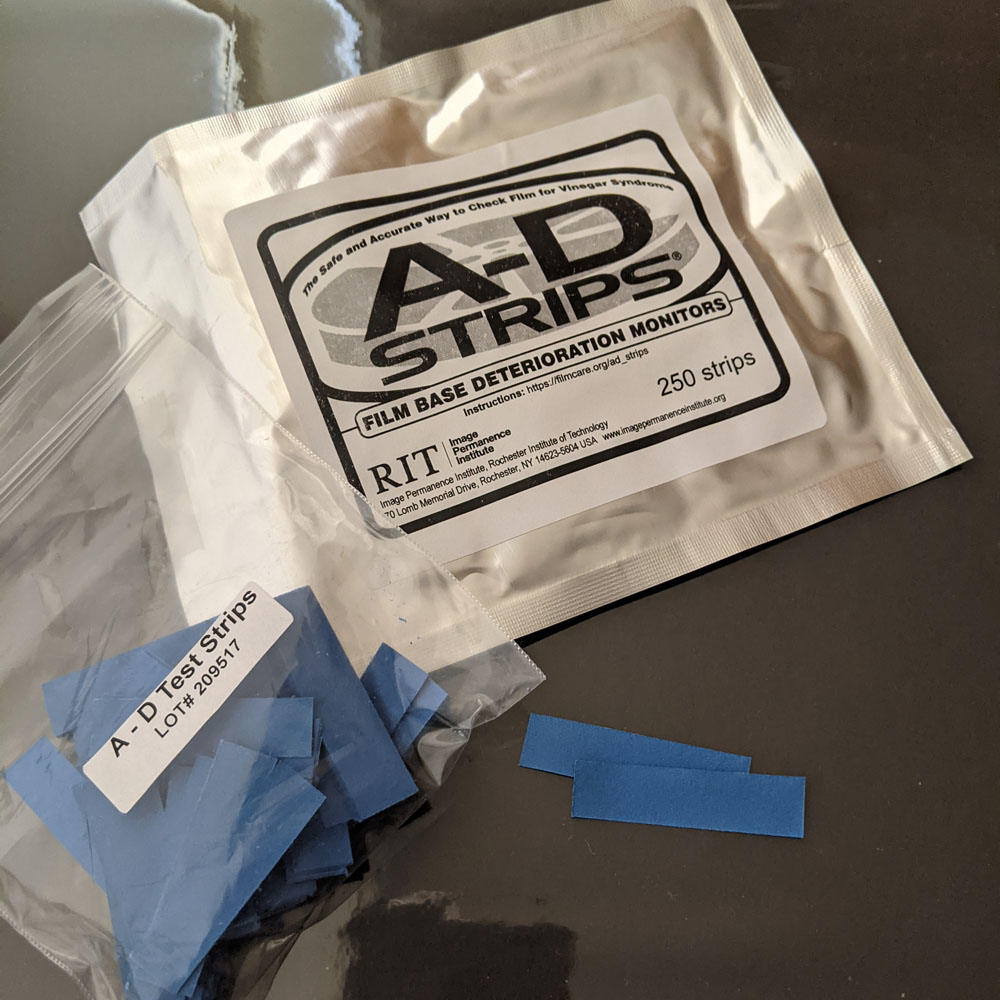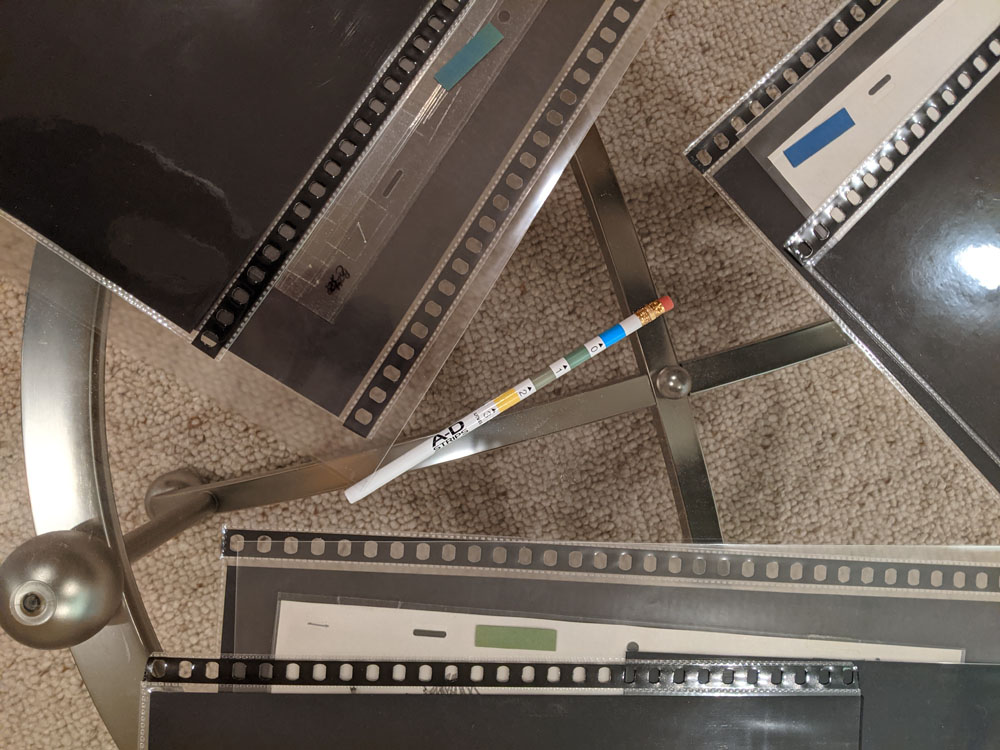My Problem
Recently I noticed that a small number of cels in my collection smelled like vinegar. Having heard about vinegar syndrome from sources in the past, I set out to confirm this and see what could be done.
Vinegar Syndrome
Vinegar syndrome describes the chemical process that occurs to cels when cellulose acetate decomposes. During this process the cel gives off an odor that smells like vinegar. Vinegar syndrome is classified in stages from 0 (not present) to 3 (most severe).
Reels of film were also made of cellulose acetate in the 1900s and are also prone to vinegar syndrome. Prints of these films were most common from the late 1940s to early 1990s. Because there are many films stored in archives, there has been some research into detecting vinegar syndrome and slowing its effects.
I posited that research applied to film preservation also applies to cels that are made of the same material. These include:
- A-D strips test film stock for vinegar syndrome. The strips change to a color that matches the severity of vinegar syndrome.
- Molecular sieves preserve film stock by absorbing acid and moisture in cannisters of film stock that is made from cellulose acetate. This seems the most promising.
- Microchamber paper is used to conserve paper based items, including collectibles like comic books and historical documents. Microchamber paper absorbs odors, pollutants and moisture that can damage the paper. I felt this was worth investigating as well.
A-D Strips
A-D strips are blue strips of paper that change color in the presence of vinegar syndrome. Although A-D strips were developed for film, I felt they could work with cels because both are made of cellulose acetate.
A-D strips come with a pencil with colored bands. The color of each band indicates the severity of vinegar syndrome after an A-D strip is exposed to the (cellulose acetate) film for at least 24 hours at room temperature.

Testing Cels for Vinegar Syndrome
To test some cels, I inserted a single A-D strip into separate poly bags with a cel. I also did the same for one poly bag without a cel to act as my control.
- The cel in the first bag had the strongest vinegar odor.
- The cel in the second bag smelled half as strong as the first bag.
- The cel in the third bag had no discernable vinegar odor.
I left the A-D strips in the bags for 24 hours at room temperature. The severity of vinegar syndrome implied by their color seemed to match my olfactory observations.
The strip with the odorless cel had some discoloration, but was still closest to stage 0. I’d give that a .1 to 0.5 although it’s hard to see in the pics.
The color of the strip with the cel that had some vinegar smell was closest to the stage 1 color for vinegar syndrome.
The color of the strip with the strongest smelling cel most closely matched the stage 2 color. You can see the pencil and 3 strips in their respective bags.

The color of the strips did not change much after the first day. Several days later, the color is nearly the same. The instructions say that A-D strips may be left for weeks, although leaving it for months may yield inaccurate results.

Preserving Cels with Microchamber Paper
We want to preserve cels indefinitely, but cellulose acetate will decompose no matter how well it’s cared for. Although this sounds alarming for cel collectors like myself, the the time frame varies from decades to hundreds of years depending on factors including temperature, humidity, light, and pollutants.
My first thought was to try inserting sheets of microchamber paper. It’s flat and readily available, so it would be ideal if it worked. I postulated the microchamber paper would absorb the acid from the cels, so a fresh set of A-D strips would not show as much severity when microchamber paper was placed into the bags.
With high hopes, I inserted new A-D strips and microchamber paper into the bags and waited for 24 hours. Unfortunately, the strips changed to the same colors as without the microchamber paper.
This doesn’t necessarily say that the microchamber paper doesn’t help. For example, it could mean that the level of acid produced by the cels I tested was too much for the paper to absorb. However, if I can’t measure it, I can’t assume that the microchamber works. I doubt the microchamber hurts, but that’s not the same obviously.
Back to the drawing board.
Preserving Cels with Molecular Sieves
Note: Because two of the cels had obvious cases of vinegar syndrome, I sent them off to Cel Oasis for treatment. My understanding is this process can take a month or two, so I’ll report on how that goes when the cels are returned. In the meantime, I’ll use the cel that caused slight discoloration for additional tests.
Molecular sieves absorb the moisture and acid from the air that is produced by vinegar syndrome. This slows down further decomposition of the film stock.
Here’s what happened when I placed molecular sieve with the cel that discolored the A-D strips just a little bit.
